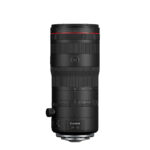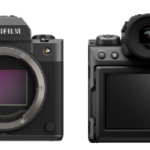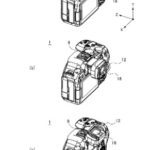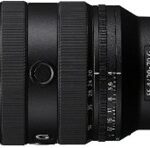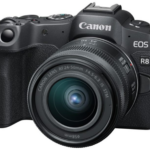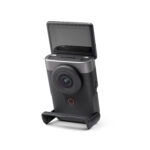Canon launches RF mount Cinema Prime lenses with series of seven models for Cinema EOS System
Canon Australia today announces the introduction of a new series of RF mount Cinema Prime lenses, building upon the existing portfolio of EF mount CN-E Primes and PL mount Sumire Primes. The seven new lenses, Canon’s first cinema lenses equipped with its RF mount, combine optical performance and cinema-style operability to meet the needs of professional video production such as dramas, documentaries, music videos and other large productions.
- CN-R14mm T3.1 L F
- CN-R20mm T1.5 L F
- CN-R24mm T1.5 L F
- CN-R35mm T1.5 L F
- CN-R50mm T1.3 L F
- CN-R85mm T1.3 L F
- CN-R135mm T2.2 L F
The native RF mount offers high speed communication between the lens and camera body, with the enhanced design allowing for a more stable and comfortable experience when operating[1].
The lenses are compatible with the EOS C70 (released in November 2020) and EOS R5 C[2] (released in March 2022) RF Cinema cameras. Fully compatible with the transmission protocol of the RF mount, and as with EF mount Prime series lenses, operators can control magnification, chromatic aberration correction, peripheral light correction, and a dual pixel focus guide via camera body operations. In addition to these functions, the new lenses feature distortion aberration correction[3]. These features support efficient video production not only during on-location recording but also post-shoot editing.
The new lenses achieve exceptional optical performance, excellent colour reproduction and are suitable for use with 4K and 8K cameras – optimally positioning large-diameter aspherical lens elements and lens elements with anomalous dispersion glass. Their compatibility with the full-frame large-format sensor, bright T-stop values[4], and the use of 11 aperture blades allow for a shallow depth of field for subjects, natural round blurring, and soft image expressions. In addition, since the colour balance is unified throughout the series, adjusting colour tones when changing lenses while shooting the same scene can be done with ease.
With precise adjusting of the operation ring, the new lenses allow smooth and accurate adjustments that are required for cinema shooting. In addition, due to the unified design across the series, including the gear position of the operation ring, the diameter of the lens and the rotation angle (operation angle), the lens can be exchanged smoothly without the need to adjust the mounting position of the matte box or external follow focus accessories for each model[5]. A new knurled surface near the mount provides a comfortable fit in the user’s hand, allowing the lens to be held securely without gripping the operation ring when attaching and detaching different lenses.
Key features of the RF mount Cinema Prime lenses:
- Genuine RF mount for stable operation without a converter
- High speed lens communication offering advanced metadata support from the lens to camera
- Geared rings offer greater control via hand operation and third party follow focus accessories
- High optical performance and high image quality for 4K, 8K and HDR productions
- T-stops up to T1.3 with broad focal lengths covering ultra-wide to telephoto
- Minimal focus breathing
- 11-blade iris for cinematic bokeh and softly diffused highlights
Availability
Pricing for the lenses will be set at dealers’ discretion closer to availability in Australia:
| CN-R14mm T3.1 L F | |
| CN-R20mm T1.5 L F | |
| CN-R24mm T1.5 L F | |
| CN-R35mm T1.5 L F | |
| CN-R50mm T1.3 L F | |
| CN-R85mm T1.3 L F | |
| CN-R85mm T1.3 L F |
[1] Using the RF lens mount removes the need for a mount adaptor on RF cameras. This makes the lens and camera combination more compact and lighter in weight
[2] Performance guaranteed in VIDEO mode, when used with EOS R5 C.
[3] New distortion aberration correction feature only available on EOS C70 and EOS R5C (in Movie mode) from launch.
[4] The brightness of a cinema lens is generally expressed as a T value, which is obtained by additionally reflecting the transmittance of the glass to the F value.
[5] Both matte box and follow focus accessories are sold separately.
Canon introduces the CR-N100 4K PTZ camera and RC-IP1000 professional PTZ controller
Canon Australia today announces the CR-N100 indoor 4K pan-tilt-zoom camera – the sixth model[1] in the PTZ line-up designed to achieve high quality video capture and seamless integration into a multi-camera system. In addition to the latest camera release, Canon introduces the RC-IP1000 professional PTZ controller for broadcast and live events. Canon also launches its new Multi-camera Management Application to facilitate the management workflow of multiple PTZ cameras.
With the addition of the CR-N100 to Canon’s line-up of remote cameras, customers now have greater choice of products that support a wide range of uses, from professional video production to video content use by enterprises, local governments, and educational institutions.
 CR-N100
CR-N100
The CR-N100 excels in image quality, offering incredible versatility and performance for its price point. The camera is equipped with a 1/2.3-type 4K CMOS sensor and DIGIC DV6 processor and a powerful optical zoom lens of 20x, delivering 4K UHD resolution footage with exceptional detail and oversampled HD video. As online meetings, lectures, events and seminars become increasingly commonplace, there is a growing need for livestreaming and video recording technology.
The CR-N100 camera includes four different ‘scene modes’ – Portrait, Sports, Low-light and Spotlight – which users can choose from to create the best possible visual expression based on their subject. The Hybrid Auto Focus system combines contrast AF (auto-focus) with external phase-detection AF, delivering rapid and accurate focusing of the subject even in low light conditions, assisting the camera operator[2].
The CR-N100 is compatible with Canon’s Auto Tracking App[3] as an add-on application offering outstanding flexibility, enabling the camera to automatically track the main speaker, without the intervention of a camera operator. The camera also supports the Multi-camera Management App that enables batch setting configuration, management, and monitoring of up to 200 cameras, making possible efficient operation of large-scale systems in such environments as enterprises, local governments, and educational institutions. These features, combined with the entry position in the range of indoor PTZ cameras, deliver a budget-friendly but high-quality automated solution.
CR-N100 key features:
- 4K30P high-image-quality video capture
- 20x optical zoom lens with a focal length of 29.3m – 601mm (35mm film equivalent)
- Hybrid Auto Focus with face detection and tracking
- Intelligent Auto Tracking[4]
- In-built protocol support, including Canon XC[5], RTMP[6]/RTMPS and RTP/RTSP, NDI|HX[7] and SRT[8], making the CR-N100 extremely flexible out of the box
- Compatible HDMI and USB-C connectivity
- Includes additional support tools such as Camera Search Tool, Remote Camera Control Application, and Webcam Driver
 RC-IP1000
RC-IP1000
The RC-IP1000 is a powerful professional broadcast PTZ controller with a host of features aimed to capture every moment with precision – suited for busy studios and production teams.
The controller has been designed to complement Canon’s high-end PTZ models for the broadcast market and is compatible with both IP and serial communication to access and control Canon PTZ cameras remotely. The input monitoring feature enables users to view their feeds on the 7-inch LCD screen, built on the controller, without the need to connect to an external monitor.
The launch of this controller is a direct response to broadcasters’ demands and has a professional control interface for comfort, paired with a high-quality ergonomic joystick. The RC-IP1000 also features a large touchscreen LCD which enables the user to intuitively[9] access multiple camera settings and features including setting the focus point for cameras. With easy control and no requirement for a PC, this professional PTZ controller has 12G-SDI and HDMI input/outputs up to 4K 60P, enabling operation and monitoring up to 200 cameras via IP.
RC-IP1000 key features:
- IP video and input monitoring (up to 200 cameras)
- PC-less setup of cameras from RC-IP1000
- HDMI Out, 12G-SDI in/out, Serial RJ45, LAN/POE+, two USB ports and two GPIO D-Sub 25pin channels
- 7-inch multi-function touchscreen LCD
- Ergonomic joystick and zoom rocker for precise control
- Multiple camera control function – group cameras and apply the same settings
- Arrow buttons for easy menu navigation
- Advanced pre-set and trace control – control other cameras during trace[10]
Availability
Pricing for the CR-N100 4K PTZ camera and RC-IP1000 professional PTZ controller will be set at dealers’ discretion closer to availability in Australia. The CR-N100 camera and RC-IP1000 will be available in Australia from November 2023 and January 2024 respectively. The Multi-camera Management Application will be available from November 2023 and can be downloaded from the relevant camera support page which can be found via https://canon.com.au.
[1] Currently there are five models in the Australian market, three indoor and two outdoor. This sixth product is the fourth indoor model.
[2] Hybrid auto focus is superior to contrast auto focus for a variety of situations.
[3] Auto Tracking Application (RA-AT001) requires a paid license
[4] Auto Tracking Application (RA-AT001) requires a paid license.
[5] Canon’s proprietary extended IP designed to control Canon’s video production devices.
[6] Real-Time Messaging Protocol. A protocol that supports livestreaming and replay of video and audio. Developed by U.S.-based Adobe Inc.
[7] A protocol that supports live-video-operation workflows using IP networks. Developed by U.S.-based NewTek, Inc. NDI is a registered trademark of NewTek, Inc in the U.S. and other countries and regions.
[8] Secure Reliable Transport. An open-source video transmission protocol developed by Haivision and supported by the SRT Alliance.
[9] The information needed for each operation is displayed in a clear and concise layout on the 7-inch LCD allowing users to instantly check details and begin tasks. The fast response for each operation helps to ensure a seamless experience.
[10] The trace function enables switching between cameras while trace is in progress to support simultaneous control of multiple cameras.



